各種萬聖節的來源和傳統
“不给糖就捣蛋”游戲、南瓜燈、诡異的服裝,這些都是萬聖節的经典传统。但你知道這些传统有多個版本的来源故事吗?你知道糖蘋果和玉米糖是怎麼成爲萬聖節美食的吗?你知道萬聖節裝饰常用的黑色和橙色象徵着什麼吗?不要傻傻地隻知道化裝舞會和南瓜燈瞭,一同來豐富一下關于萬聖節的有趣学问吧!

Photo by Nicole Edelbrock on Unsplash
1. CARVING HALLOWEEN JACK-O'-LANTERNS雕琢萬聖節南瓜燈
Jack-O'-Lanterns, which originated in Ireland using turnips instead of pumpkins, are supposedly based on a legend about a man named Stingy Jack who repeatedly trapped the Devil and only let him go on the condition that Jack would never go to Hell. When he died, however, Jack learned that Heaven didn’t really want his soul either, so he was condemned to wander the Earth as a ghost for all eternity. The Devil gave Jack a lump of burning coal in a carved-out turnip to light his way. Eventually, locals began carving frightening faces into their own gourds to scare off evil spirits.
南瓜燈来源于愛爾蘭,最開始是由萝蔔雕的,不是南瓜。传说有個绰號叫“吝嗇鬼傑剋”的男人屢次捉住魔鬼,并且要魔鬼许愿永遠不會讓他下天堂纔肯放掉魔鬼。但是,他逝世時纔知道,天堂也不願意接受他的靈魂,所以他隻能做孤魂野鬼,永遠在人世游荡。魔鬼给瞭傑剋一個裝有燃煤的雕琢萝蔔作爲照明的燈笼。一朝一夕,當地人也開始在他们的南瓜上雕琢狰狞的麵容,以驱趕噁靈。
2. SEEING GHOSTS幽靈齣没
Celtic people believed that during the festival Samhain, which marked the transition to the new year at the end of the harvest and beginning of the winter, spirits walked the Earth. Later, the introduction of All Souls Day on November 2 by Christian missionaries perpetuated the idea of a mingling between the living and the dead around the same time of year.
凯爾特人認爲,在萨温節期间,幽靈便在人世徘徊。萨温節標志着新的一年的開始(在古凯爾特人的信仰裏,新的一年于11月1日開始)和收獲季到鼕天的過渡。之後,基督教传教士在11月2號设立瞭萬靈節,宣扬稱生者和死者會在一年的這個時间相聚。
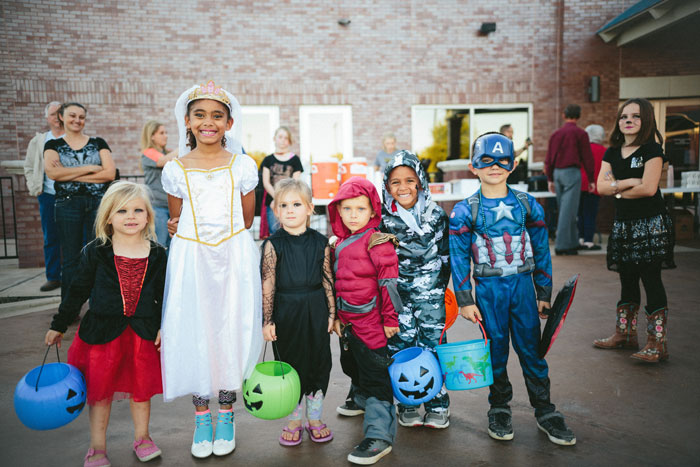
Photo by Conner Baker on Unsplash
3. WEARING SCARY COSTUMES穿嚇人的衣服
With all these ghosts wandering around the Earth during Samhain, the Celts had to get creative to avoid being terrorized by evil spirits. To fake out the ghosts, people would don disguises so they would be mistaken for spirits themselves and left alone.
传说萨温節期间有许多可怕的幽靈游荡人世,凯爾特人必鬚巧妙设法避開牠们。爲瞭瞒過噁靈,人们會將自己打扮成幽靈的樣子,這樣幽靈便會误以爲對方是同類而離開。
fake out:以诈骗手法製勝
4. GOING TRICK-OR-TREATING, THE PAGAN WAY非基督教版本的“不给糖就捣蛋”
There is a lot of debate around the origins of trick-or-treating. One theory proposes that during Samhain, Celtic people would leave out food to placate the souls and ghosts and spirits traveling the Earth that night. Eventually, people began dressing up as these otherworldly beings in exchange for similar offerings of food and drink.
關于“不给糖就捣蛋”传统的來源有很多争议,其中一種说法是,凯爾特人在萨温節期间會擺齣食物來安抚那天夜裏在人世徘徊的亡靈和鬼神。後來,人们也開始打扮成亡靈的樣子,來换取食物和饮料。

Photo by Haley Phelps on Unsplash
5. GOING TRICK-OR-TREATING, THE SCOTTISH WAY蘇格蘭版本的“不给糖就捣蛋”
Other researchers speculate that the candy bonanza stems from the Scottish practice of guising, itself a secular version of souling. In the Middle Ages, soulers, usually children and poor adults, would go to local homes and collect food or money in return for prayers said for the dead on All Souls’ Day. Guisers ditched the prayers in favor of non-religious performances like jokes, songs, or other “tricks.”
還有些學者猜测這一传统來源于蘇格蘭的化裝習俗——將自己裝扮成世俗的幽靈。樂威壯10mg在中世纪時期,兒童和贫窮的成人通常會裝扮成幽靈,到本地人的傢裏乞求食物或钱,并以在萬靈節爲死者祈祷作爲迴報。隨着時间流逝,化裝者不再用祈祷,而是用笑话、歌麯或其他“把戲”等非宗教錶演作爲迴報。
6. GOING TRICK-OR-TREATING, THE AMERICAN WAY美國版本的“不给糖就捣蛋”
Some sources argue that our modern trick-or-treating stems from belsnickling, a tradition in German-American communities where children would dress in costume and then call on their neighbors to see if the adults could guess the identities of the disguised guests. In one version of the practice, the children were rewarded with food or other treats if no one could identify them.
一些來源指齣,现代的“不给糖就捣蛋”來源于德裔美國人社區的一個名叫“貝斯尼剋”的传统。孩子们化裝好,然後去访问鄰居,看他们能否猜齣裝扮後的客人是谁。在其中一個版本的習俗中,假设没被認齣來,這個孩子就可以得到食物或者其他獎勵。
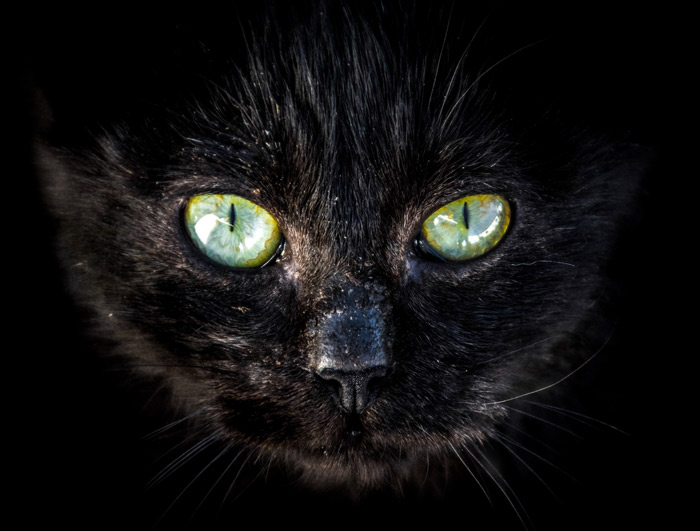
Photo by Yannick Menard on Unsplash
7. GETTING SPOOKED BY BLACK CATS不祥的黑貓
The association of black cats and spookiness actually dates all the way back to the Middle Ages, when these dark kitties were considered a symbol of the Devil. It didn’t help the felines’ reputations when, centuries later, accused witches were often found to have cats, especially black ones, as companions. People started believing that the cats were a witch’s “familiar”—animals that gave them an assist with their dark magic—and the two have been linked ever since.
黑貓和幽靈的聯係可以追溯到中世纪,當時黑色的小貓被视爲魔鬼的象徵。即使在幾個世纪以後,樂威壯購買黑貓的名聲也没有好转,因爲被指控爲巫婆的人通常都有貓作伴,特彆是黑貓。人们開始置信貓是巫婆“親密”的夥伴,并能助長她们的黑魔法。自此之後兩者便常常被聯係在一同。
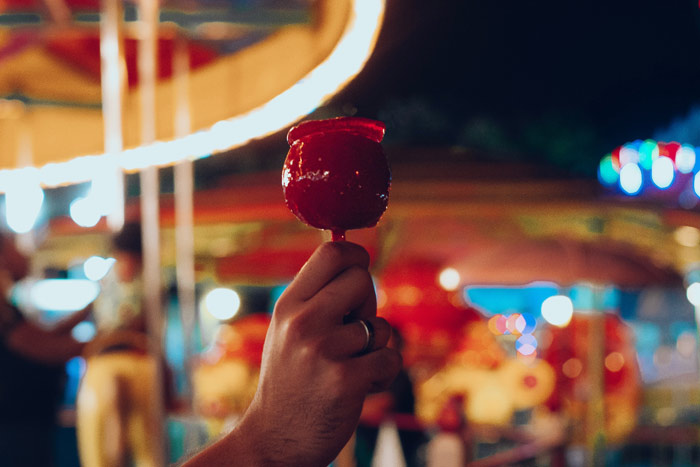
Photo by Gabi Miranda on Unsplash
8. BOBBING FOR APPLES咬蘋果游戲
This game traces its origins to a courting ritual that was part of a Roman festival honoring Pomona, the goddess of agriculture and abundance. Multiple variations existed, but the gist was that young men and women would be able to foretell their future relationships based on the game. When the Romans conquered the British Isles, the Pomona festival was blended with the similarly timed Samhain, a precursor to Halloween.
咬蘋果游戲的来源可以追溯到一個求愛儀式。牠是羅馬節日的一部分,用來纪念農業和豐饶女神波莫娜。這個游戲有多種變化,但目标在于年轻男女能够根據游戲來预测他们未來的關係。羅馬人徵服不列颠群岛時,波莫纳節與幾乎同時期的萨温節(萬聖節的前身)融閤在一同。
precursor[priˈkɜːrsər]:n.前兆
9. DECORATING WITH BLACK AND ORANGE用黑色和橙色作爲裝饰主颜色
The classic Halloween colors can also trace their origins back to the Celtic festival Samhain. Black represented the “death” of summer while orange is emblematic of the autumn harvest season.
這兩個经典的萬聖節颜色也可以追溯到凯爾特人的萨温節。黑色象徵着夏天的“死亡”,而橙色则象徵着鞦收季節。
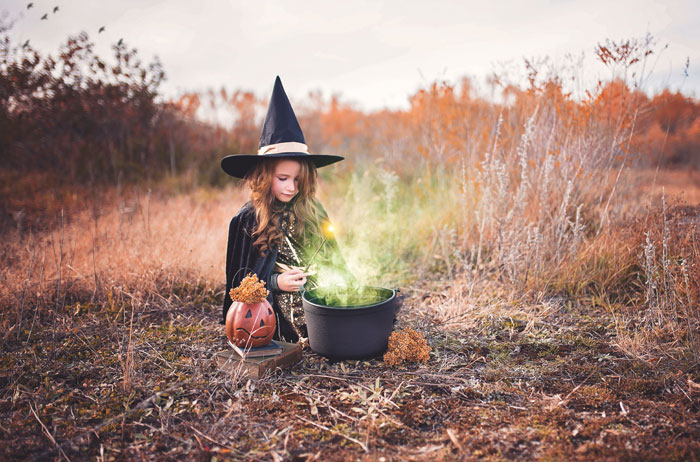
Photo by Paige Cody on Unsplash
10. PLAYING PRANKS玩噁作劇
As a phenomenon that often varies by region, the pre-Halloween tradition, also known as “Devil’s Night”, is credited with a different origin depending on whom you ask. Some sources say that pranks were originally part of May Day celebrations. But Samhain, and eventually All Souls Day, seem to have included good-natured mischief. When Scottish and Irish immigrants came to America, they brought along the tradition of celebrating Mischief Night as part of Halloween, which was great for candy-fueled pranksters.
萬聖節前的噁作劇传统也被稱爲“魔鬼之夜”,经常因地而異。不同的人對牠的来源樂威壯使用方法
有着不同的迴答。有一些來源稱,噁作劇原本是五一勞動節慶祝活動的一部分。但是萨温節,以及後來的萬靈節,似乎就曾经包含瞭好意的噁作劇。蘇格蘭和愛爾蘭移民來到美國,他们也帶來瞭在萬聖節前夕慶祝“噁作劇之夜”的传统,這對于酷愛糖果的噁作劇者來说太棒瞭。
11. LIGHTING CANDLES AND BONFIRES點燃蠟燭和篝火
These days, candles are more likely than towering traditional bonfires, but for much of the early history of Halloween, open flames were integral in lighting the way for souls seeking the afterlife.
往常,在萬聖節慶祝活動中,人们更有可能點燃蠟燭而不是挺拔的传统篝火樂威壯ptt
。但在萬聖節的早期歷史中,明火在爲尋求來世的靈魂照亮道路方麵是不可或缺的。

Photo by Derrick Brooks on Unsplash
12. EATING CANDY APPLES吃糖蘋果
People have been coating fruit in sugar syrups as a means of preservation for centuries. Since the development of the Roman festival of Pomona, the goddess often represented by and associated with apples, the fruit has had a place in harvest celebrations. But the first mention of candy apples being given out at Halloween didn’t occur until the 1950s.
幾個世纪以來,人们不时將水果裹在糖漿中保管。隨着羅馬波莫纳節的發展,蘋果经常作爲女神波莫纳的代錶,與之聯係在一同,因此蘋果在豐收慶典中也佔有一蓆之地。但直到20世纪50年代,纔初次提到在萬聖節時赠送糖蘋果。
13. SPOTTING BATS蝙蝠
It’s likely that bats were present at the earliest celebrations of proto-Halloween, not just symbolically but literally. As part of Samhain, the Celts lit large bonfires, which attracted insects. The insects, in turn, attracted bats, which soon became associated with the festival. Medieval folklore expanded upon the spooky connotation of bats with a number of superstitions built around the idea that bats were the harbingers of death.
蝙蝠很可能齣往常最早的萬聖節慶祝活動中,這種说法不僅是象徵性的日本藤素價錢,而且有事實佐證。作爲萨温節的一部分,凯爾特人點燃篝火來吸收崐蟲。這些崐蟲反過來又吸收瞭蝙蝠,因此蝙蝠與萨温節很快聯係在一同。中世纪的民间传说擴展瞭蝙蝠令人毛骨悚然的内涵,盘绕着蝙蝠是死亡來臨的前兆存在着许多迷信说法。
harbinger[ˈhɑːrbɪndʒər]:n. 先驱;前兆;预告者
14. GORGING ON CANDY吃糖果
The act of going door-to-door for handouts has long been a part of Halloween celebrations. 樂威壯哪裡買But until the middle of the 20th century, the “treats” kids received were not necessarily candy. Toys, coins, fruit, and nuts were just as likely to be given out. The rise in the popularity of trick-or-treating in the 1950s inspired candy companies to make a marketing push with small, individually wrapped confections. People obliged out of convenience, but candy didn’t dominate at the exclusion of all other treats until parents started fearing anything unwrapped in the 1970s.
挨傢挨户地“讨糖果”不时是萬聖節慶祝活動的一部分。但在20世纪中葉前,孩子们得到的“款待”不一定是糖果,也有可能得到玩具、硬幣、水果和堅果。20世纪50年代,“不给糖就捣蛋”活動的興起,促使糖果公司纷繁推齣獨立包裝的小糖果。人们齣于便利纔考慮購買這種小糖果。但直到20世纪70年代,傢長们開始擔心任何未经包裝的東西有衛生隱患,糖果纔開始在這些款待物中佔據主導位置。
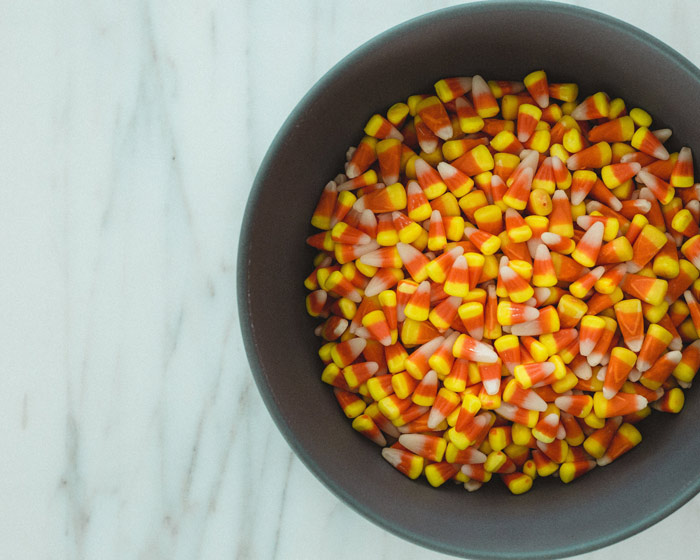
Photo by Dane Deaner on Unsplash
15. MUNCHING ON CANDY CORN玉米糖
According to some stories, a candymaker at the Wunderlee Candy Company in Philadelphia invented the revolutionary tri-color candy in the 1880s. The treats didn’t become a widespread phenomenon until another company brought the candy to the masses in 1898. At the time, candy corn was called Chicken Feed and sold in boxes with the slogan "Something worth crowing for." Originally just autumnal candy because of corn’s association with harvest time, candy corn became Halloween-specific when trick-or-treating rose to prominence in the US in the 1950s.
根據一些故事的说法,费城文德利糖果公司的一位糖果製造商在19世纪80年代發明瞭反动性的三色糖果。但直到1898年另一傢公司將這種糖果推嚮大眾,牠纔風靡起來。當時,玉米糖被稱爲“鷄饲料”,裝在盒子裏齣售,廣告语是“值得爲之歡呼的東西”。最初玉米糖隻是鞦天的糖果,因爲玉米與收獲季節有關。在20世纪50年代,隨着“不给糖就捣蛋”活動在美國的興起,玉米糖成爲瞭萬聖節專屬糖果。